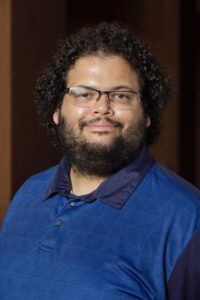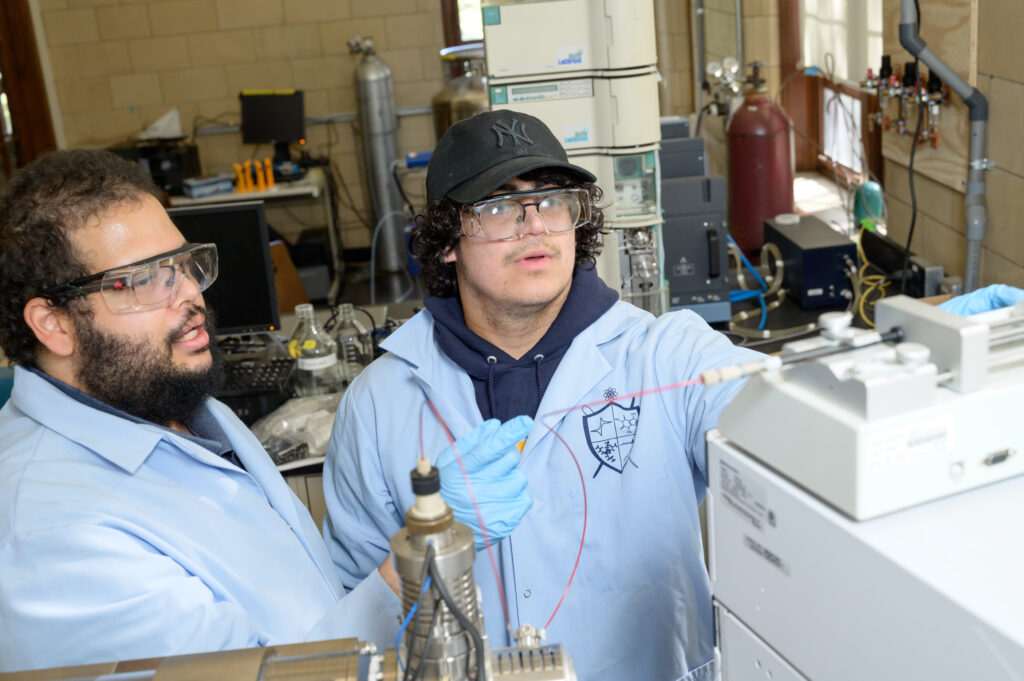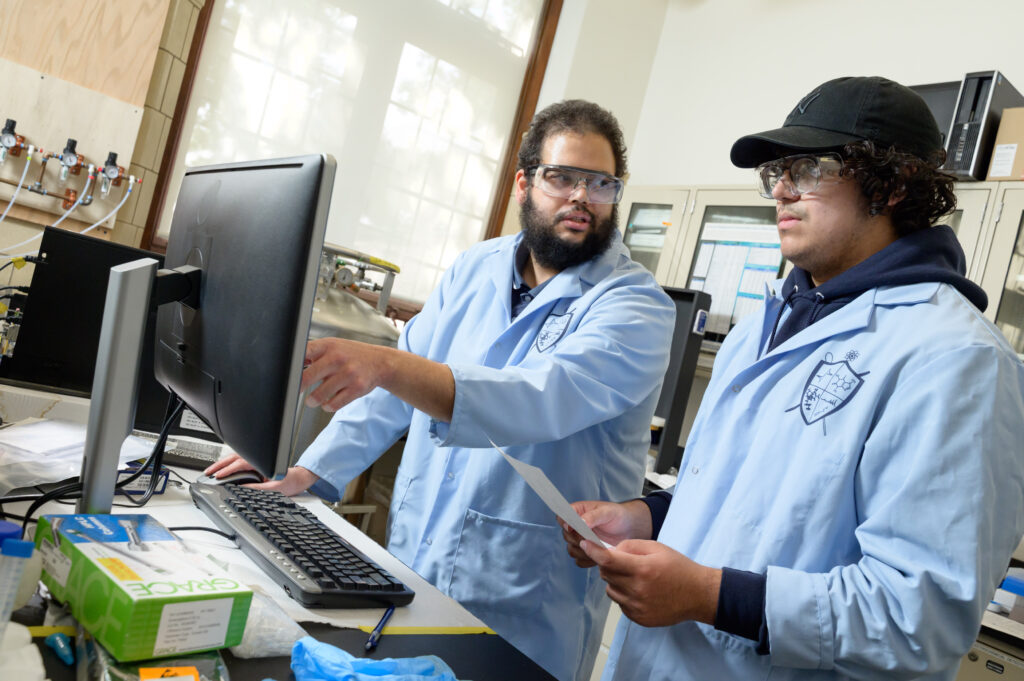Chemistry Professor’s Grant Supports Undergraduate Summer Research
A grant awarded to Jonathan T. Ashby ’09, assistant professor of chemistry, helped to support an undergraduate research stipend this summer for a Trinity College student working on Ashby’s research project. The grant also will support a student researcher in the summer of 2026.

Ashby was awarded a Pittcon Undergraduate Analytical Research Program (UARP) grant from the Society for Analytical Chemists of Pittsburgh, a non-profit organization dedicated to promoting science awareness and education. The objective of the grant is to promote innovative research in the field of analytical chemistry while also providing an opportunity for advanced training and development of students at institutions without graduate programs in the physical sciences.
Ashby’s research project—“Development of covalently binding fluorogenic dyes as labels for mass spectrometric analysis of proteinnucleic acid complexes”—investigates how biomolecules interact with one another by labeling their surfaces with a dye molecule called fluorescamine. Ashby explained that normal biological functions are dependent on interactions between biomolecules like proteins, nucleic acids, and sugars, but diseases can occur when proteins misfold and clump together forming large plaques. One prominent example of this phenomenon is Alzheimer’s disease, he said.
“One of our big goals is to use the labeling to identify where the proteins interact with each other. This way, we could use that information to identify molecules that might inhibit the aggregation process,” said Ashby. These insights could potentially be used by pharmaceutical companies to screen for therapeutics for treating certain types of diseases, he added.

This past summer, the grant supported a stipend for neuroscience major Ethan Andujar ’27. For eight weeks from May to July, Andujar worked with Ashby in the Clement Chemistry Building identifying optimal conditions for labeling proteins with fluorescamine, using fluorescence and mass spectrometry to see which amino acids in proteins can be labeled with fluorescamine, and using fluorescamine to identify binding between protein-DNA pairs that are known to interact in the body.
Next summer, Ashby plans to visit UMass Amherst with a student researcher to utilize specialized mass spectrometers to study larger proteins. He said, “One of the benefits of having the Pittcon UARP funding for summer research is that it provides students with the opportunity to use nearby instrumentation without having to interfere with their busy schedules during the semester.”
Ashby said that this type of research is appealing to students because of its wide applicability to the health sciences. “Many of my research students are interested in attending a medical program after graduation and would like to learn about basic research and assay development,” he said. “There is a growing field of research that’s using similar types of labeling to study the structure of proteins and how they are interacting with other molecules.”

Working with students in the lab and supporting their development is important to Ashby because of his own experience as a Trinity student. Ashby began doing analytical research as an undergrad working with Janet F. Morrison, principal lecturer in chemistry, emerita. “She was looking at extraction of pesticides from human hair as a less invasive method of testing exposure for field workers,” Ashby said. “That sparked my interest in developing assays that can quickly provide information about the nature of exposure, or in my case, protein interaction, without a lot of specialized equipment.”
Reflecting the evolution of his own research interests towards biological analytical work as a graduate student and postdoc researcher, Ashby said that he now wants to get his Trinity students thinking about the intersection of chemistry with other disciplines. He identified the interdisciplinary outlook and collegial spirit within Trinity’s Chemistry Department as a formative influence on his interests as a scientist.
“One thing that I learned early on at Trinity was, ‘Pay it forward.’ Upper-year chemistry majors would mentor students taking introductory courses, while faculty took on student research assistants in a wide variety of fields and were genuinely interested in their success,” Ashby said. “Returning to Trinity as a faculty member, I see that students and faculty within the department are just as committed to supporting one another as they were when I was a student, and I’m delighted to be part of this cycle.”
